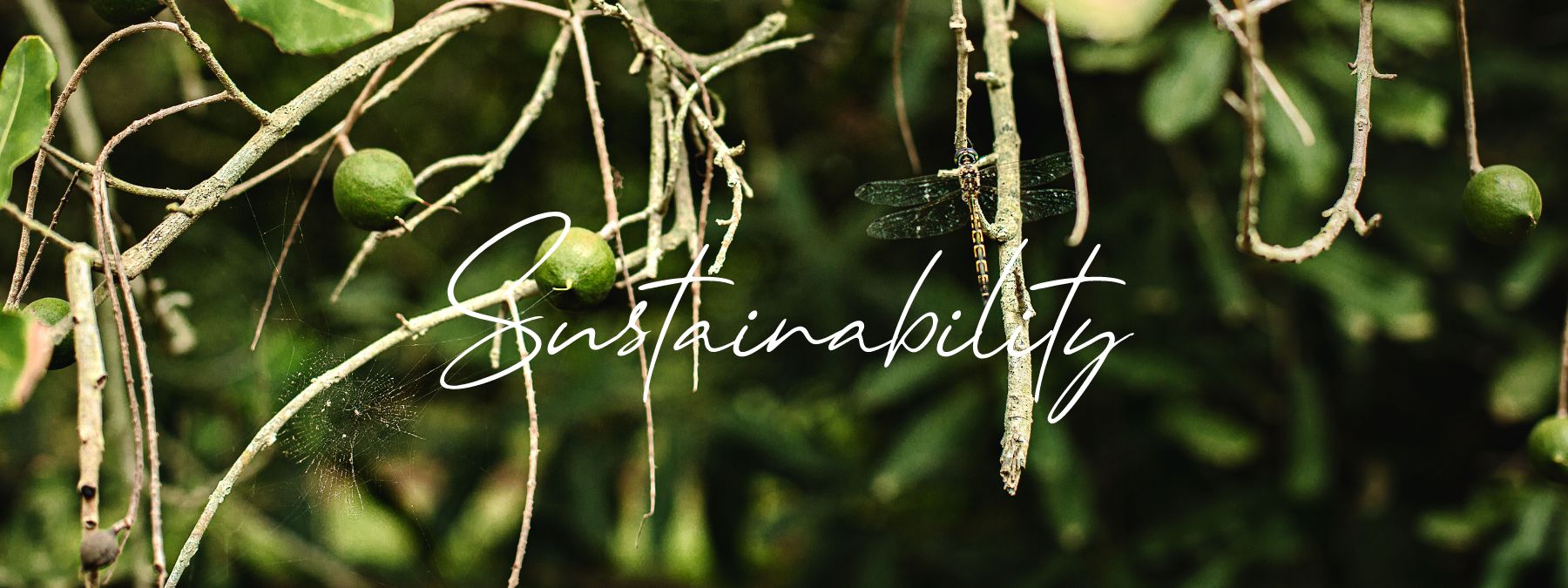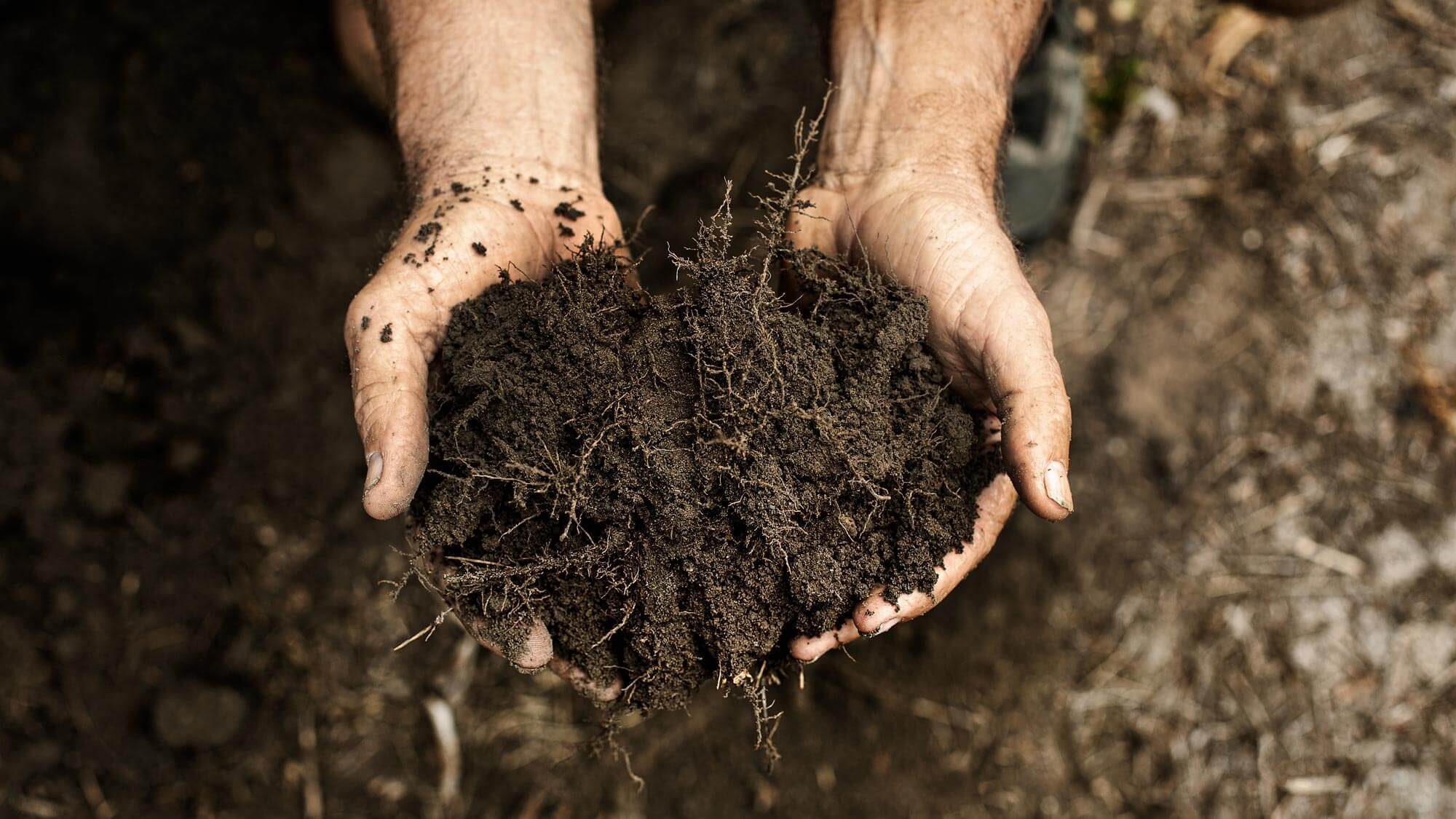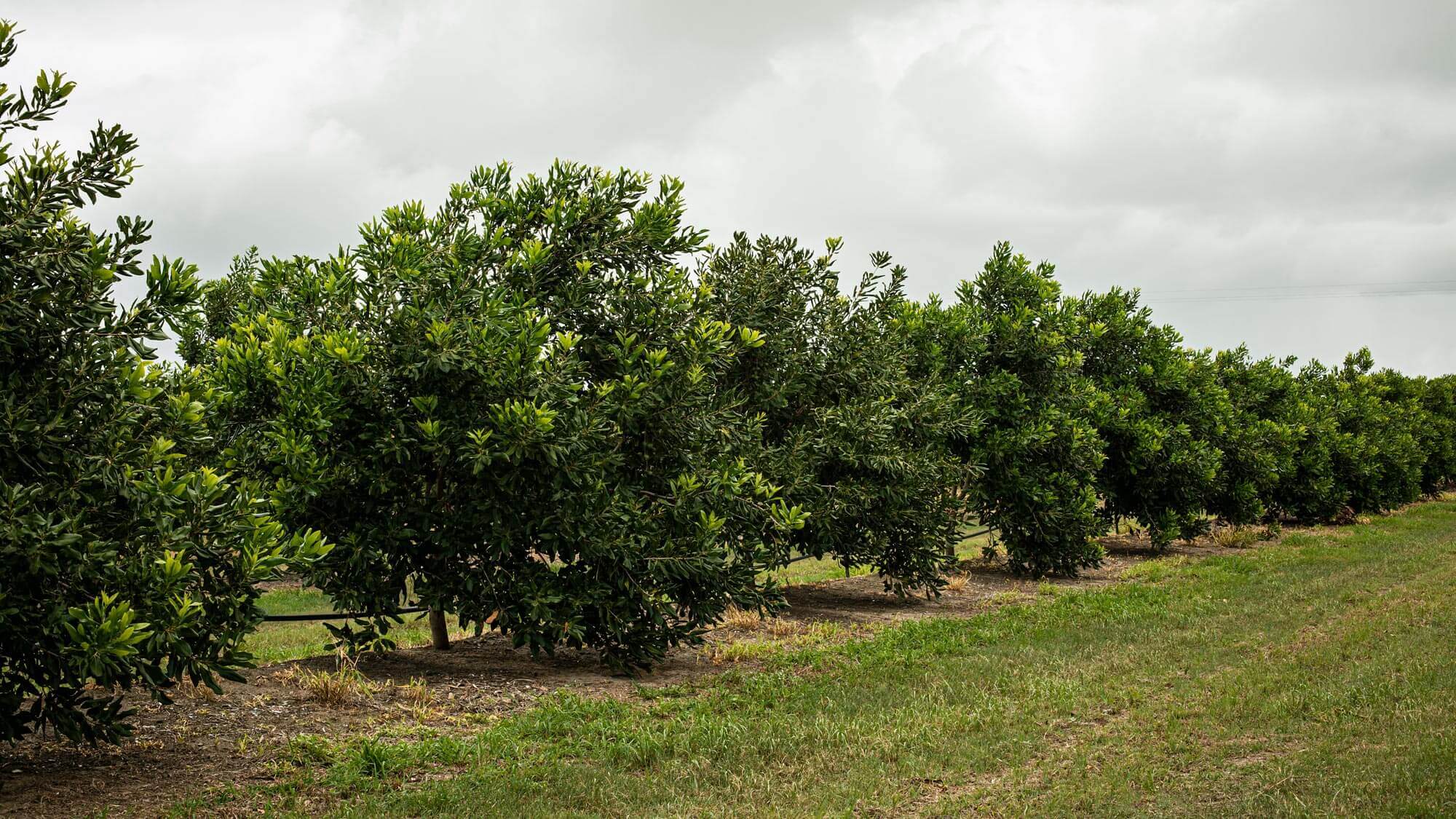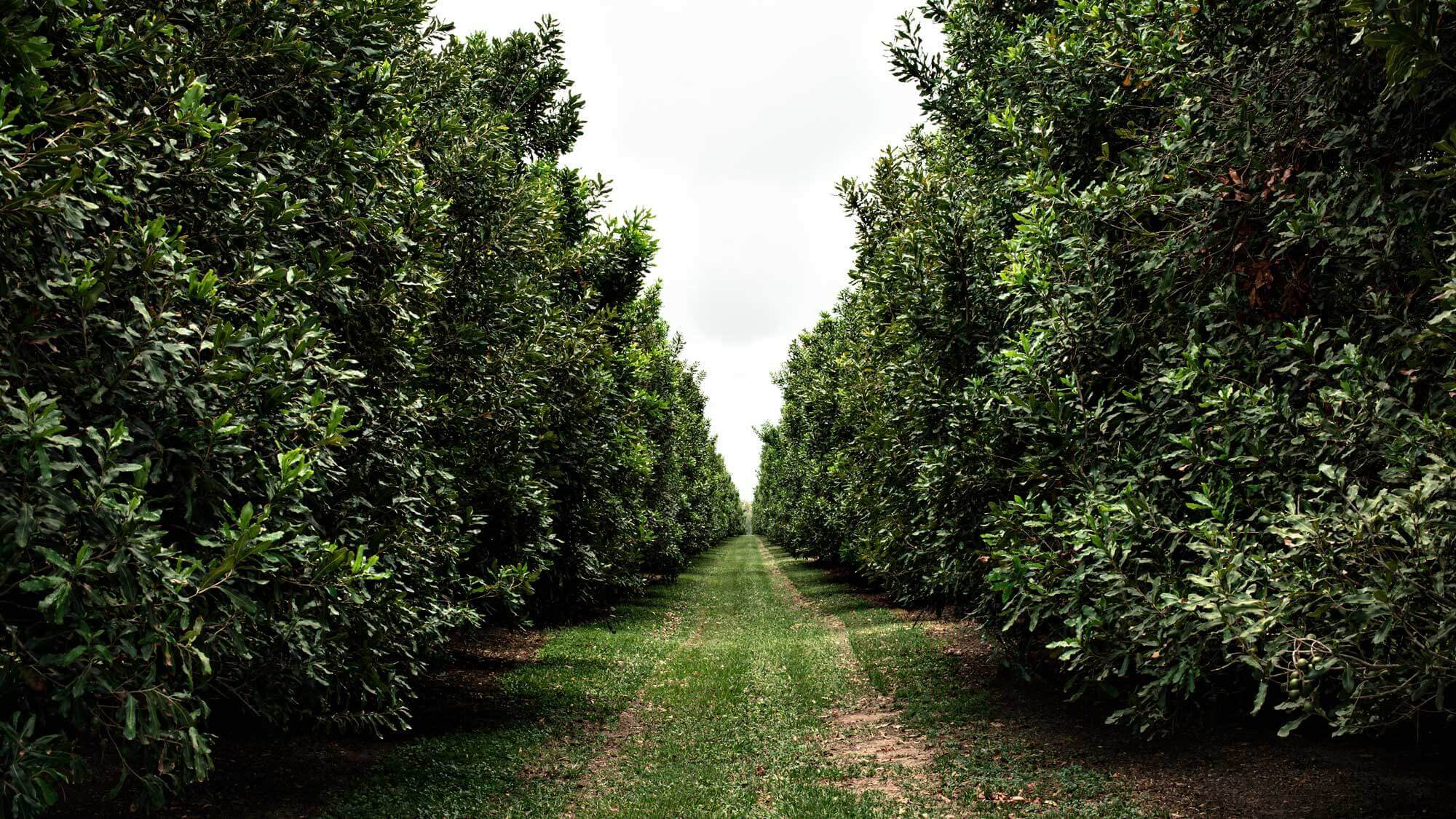OUR COMMITMENT
At Macadamias Australia we are committed to a clean, green future, caring for the environment, each other and every life we touch. With that commitment comes responsibility; a responsibility handed down from our parents to every member of our family and team, and which we all gladly shoulder together.
Across all areas of our business our mission is to continually innovate our farming and processing practices, improve our energy efficiency whilst minimising our impact on the environment.
We have decades of experience with careful consideration behind our approach to farming and we literally start from the ground up. We start with the soil.
CARBON-NEGATIVE ACCREDITED
At Macadamias Australia, we have spent the last decade intentionally regenerating our soils by adding organic matter to the orchard floor and letting the natural wild grasses and weeds develop a meadow between our rows of trees. The organic matter added physical carbon into the soil. The meadow in the interrow with the trees harnessed the energy of the sun to draw in carbon from the atmosphere and grew carbon into the soil through roots growing and dying.
These roots also gifted and hosted a range of microorganisms including bacteria, protozoa, algae, and fungi, exuded sugars to encourage the trade of nutrients. Ultimately the earthworms have moved in to accelerate the enrichment of the nutrients in the soil and amplifying the positive feedback of growth and thus more carbon. After many years of applying this approach, we have seen a gradual climb in our organic matter and a bloom in soil life. The growth of the trees over the many years has also established a fixed amount of carbon in the wood scaffolding of our trees adding to our carbon negative status.
After the nuts have been harvested, dried, and cracked, the shells are then re integrated into our processing as a thermal and electric energy source which will cut back our electricity demand so as to minimise co2 emissions that we would incur on the grid.
To improve the understand of our emissions footprint and the mechanisms behind that, we engaged Carbon Friendly to perform an audit on the business. This has not only given a value of our emissions but has identified the steps in our business that have a higher emissions factor, allowing us to focus on ways to minimise emissions in these areas. The long-term goal is to minimise our carbon footprint in the processing to as low as possible, whilst maximizing our carbon capturing on our farms. This ultimately is a win-win for us as carbon rich soils improve the yield and health of our trees.
GROWING AND PRODUCTION
Sustainability is at the heart of the many growing and production systems we use to produce our crop. Timing, care for the environment, and attention to detail allow us to sustainably supply a high-quality product year after year.
This ideal of being able to continuously to produce high quality nuts and high yields from the original plantings of trees for generations to come drives us to keep exploring and adopting better farming practices.
We regularly sample soils and plant tissues to compare productivity results and monitor overall orchard visual condition to ensure our nutrient applications are exactly what the trees need.
The improved health, life expectancy, and productivity of our trees speak for themselves.
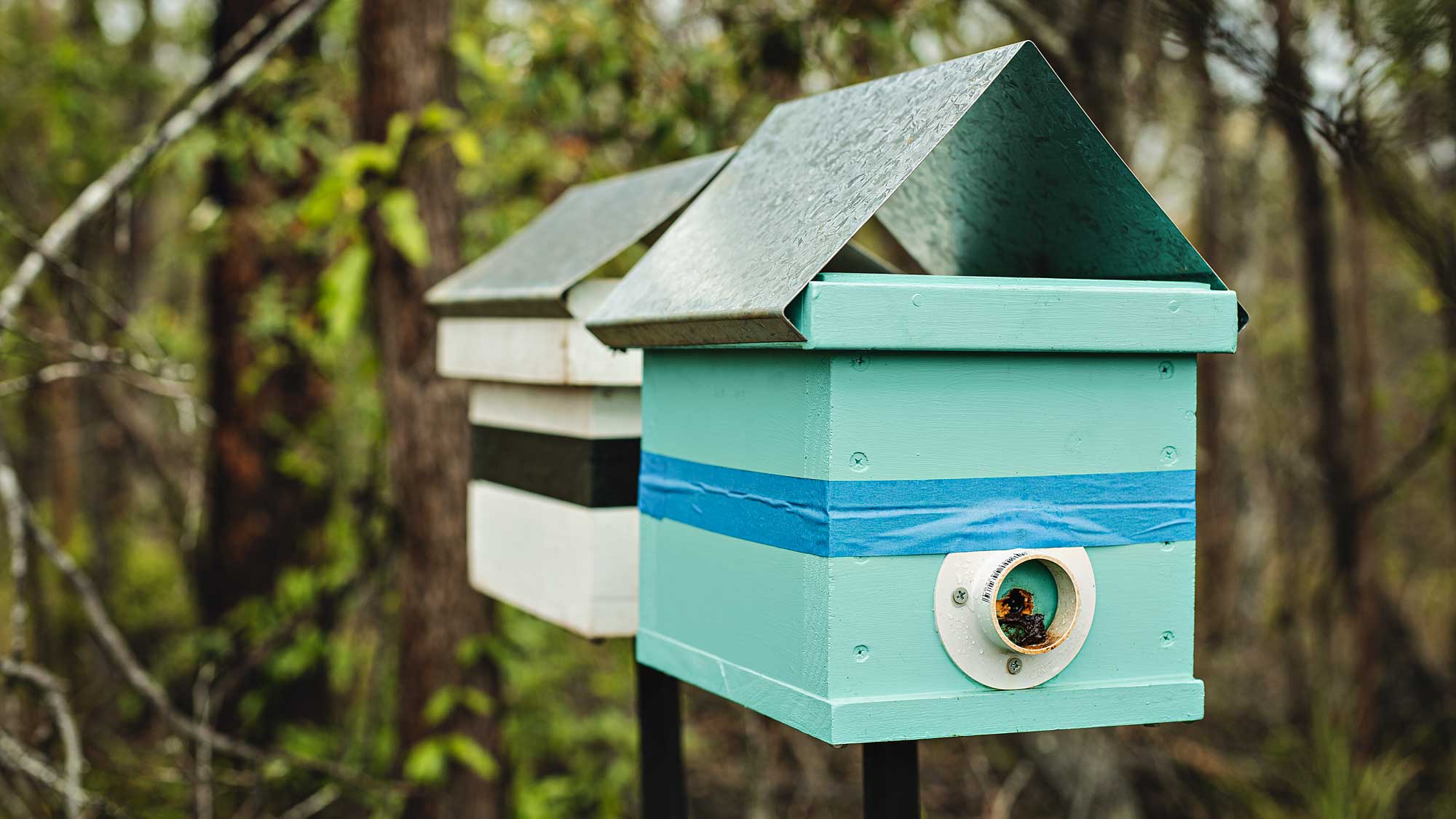
POLLINATION
When our trees start flowering, we use honey bees as well as Native Stingless Bees living within the native vegetation for pollination. We are also exploring the use of other Native Bees rescued from land clearing as an additional pollinator. We have re-housed these bees in new hives in the surrounding native bush and are now breeding them through a non-invasive more natural “budding” process.
This process closely resembles the way they would breed and expand in the wild allowing us to use a native pollinator on a native crop. Pollination is also performed by other insects crawling over the flowers made possible due to our low chemical intervention approach.
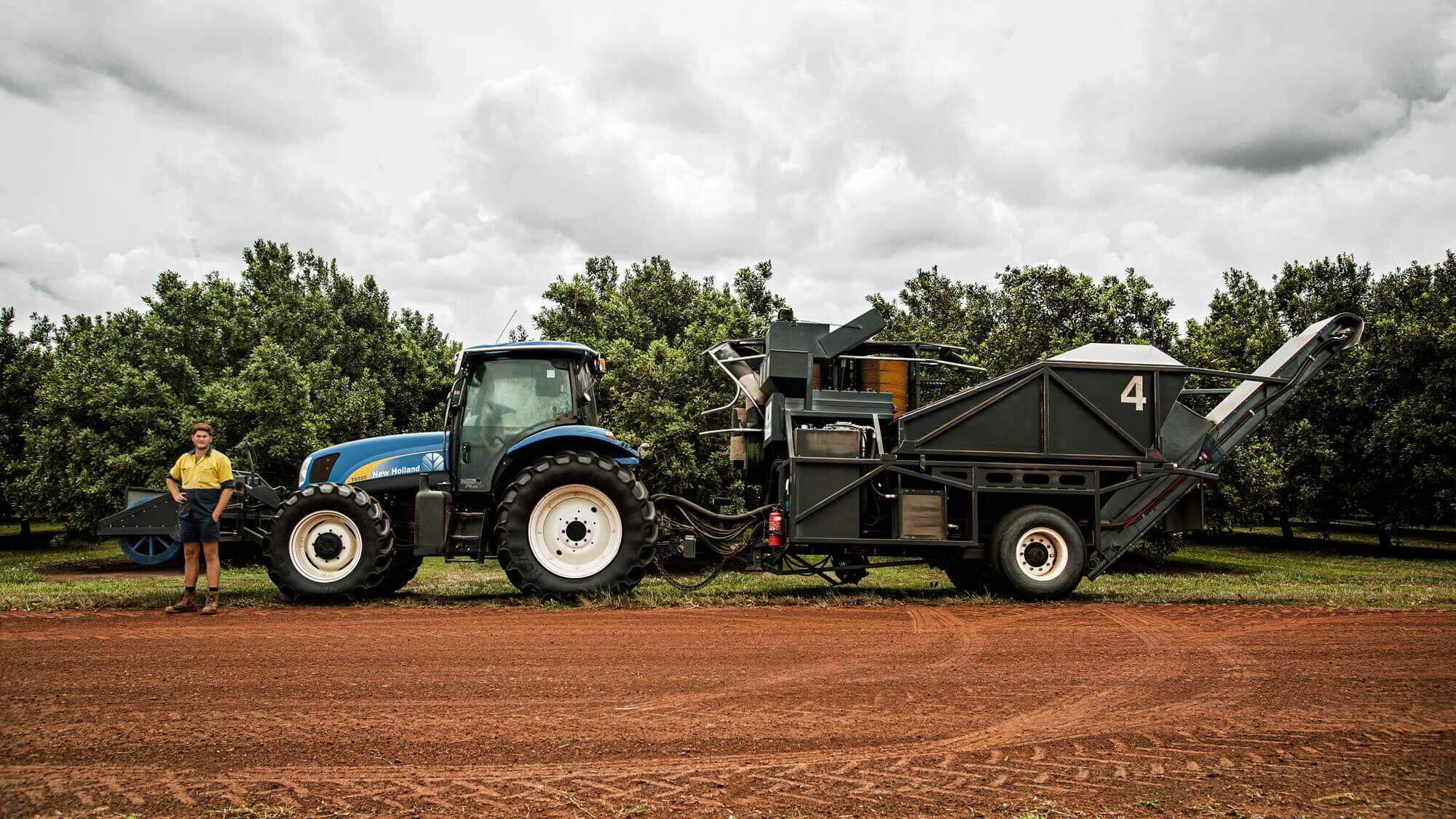
HARVESTING
Although the harvesting process sounds simple, “pick up nuts and transport to shed” it’s the little things that make the big difference. Starting with our own harvester design which gives us cleaner pick-up rates and higher quality results as nuts are not left on the ground too long. We also use large capacity bins for working in long rows and reducing the unloading times and frequency. We also install weight scales from the first harvest to provide accurate yield mapping data that overlaid on block maps, shows how well each area is performing in detail.
TRANSPORT
To ensure we maintain quality and consistency, our nuts do not sit in the heat for long periods as we unload directly from the harvesters into the trucks which transport back to our processing facility within hours of harvesting. Even the drop height of the nut has been considered through the whole process as a fall from height can damage the kernel inside.
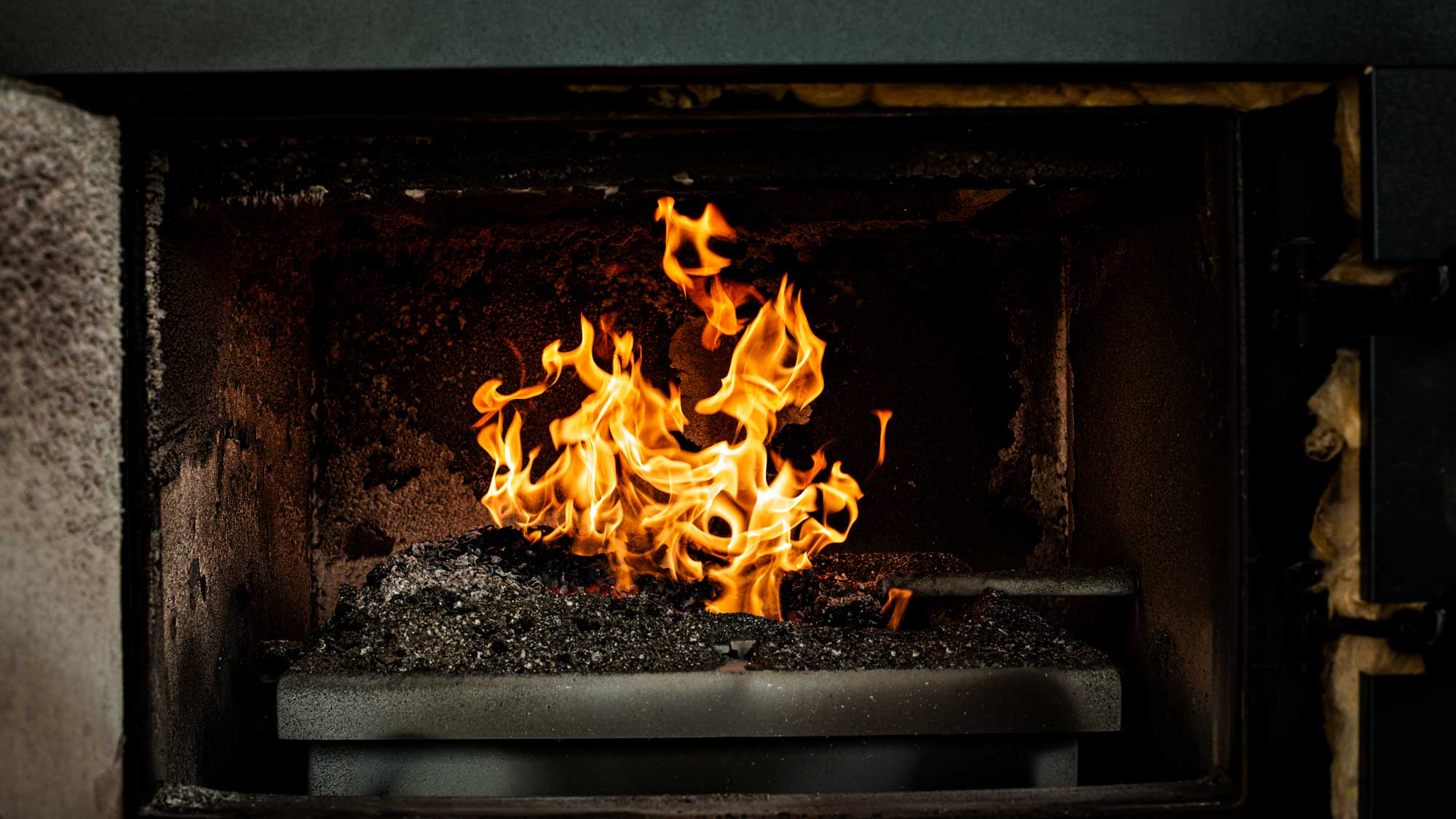
PRODUCT CARE, PROCESSING & STORAGE
From the time it is first received, to storage in silos, the product is monitored, sampled, and tracked with attention again given to drop heights followed by dehusking, drying and storage. Dehusking is performed inhouse using custom developed dehuskers built to provide efficient results with zero damage to kernel quality.
Our drying and storage process is temperature controlled to maintain optimal quality and is also environmentally friendly. The heat source is provided by very efficient furnaces burning our own macadamia shell as fuel. This endless renewable source burns very clean and produces multiple energy sources in addition to the heat for drying:
- heat for the drying process and hot water
- gases that fuel a combustion to generate our power; and
- by-product called Bio-Char which is returned to the orchard soil as a form of carbon
This entire process is another example of our commitment not only to product quality, but to our sustainable closed loop process and our precious environment.
RESEARCH AND DEVELOPMENT
Experimenting, trialing and constantly looking for opportunities to improve anything and everything we do is a very strong driver for our family and farm. We spend an enormous amount of time trialing, monitoring, measuring and looking at what we do, why we do it and how can we be better at it. With assistance from our own on farm PhD as well as external researchers, this commitment has led to ground breaking discoveries in the form of improved yields and quality, damage mitigation of fruit and the reduction our environmental impact which is now assisting the creation of Industry Standards for regulation sediment and nutrient run off for the region.
One noteworthy project we’re very excited about is the Arboretum we are establishing in partnership with the Macadamia Conservation Trust to assist in protecting genetics from risk of loss through bushfire and land clearing etc. This planting of over 600 trees, from the most endangered and working backwards, will be the largest single collection of distinct genetics within the industry.
We invest and participate in ongoing scientific research to continually improve not only our practices but also assist the macadamia industry as a whole. For over 15 years, the macadamia industry has continuously received a clean bill of health in the Australian Government’s National Residue Survey, which monitors agricultural chemicals and environmental contaminants in our fresh food. This record is unmatched by any other fresh commodity.

